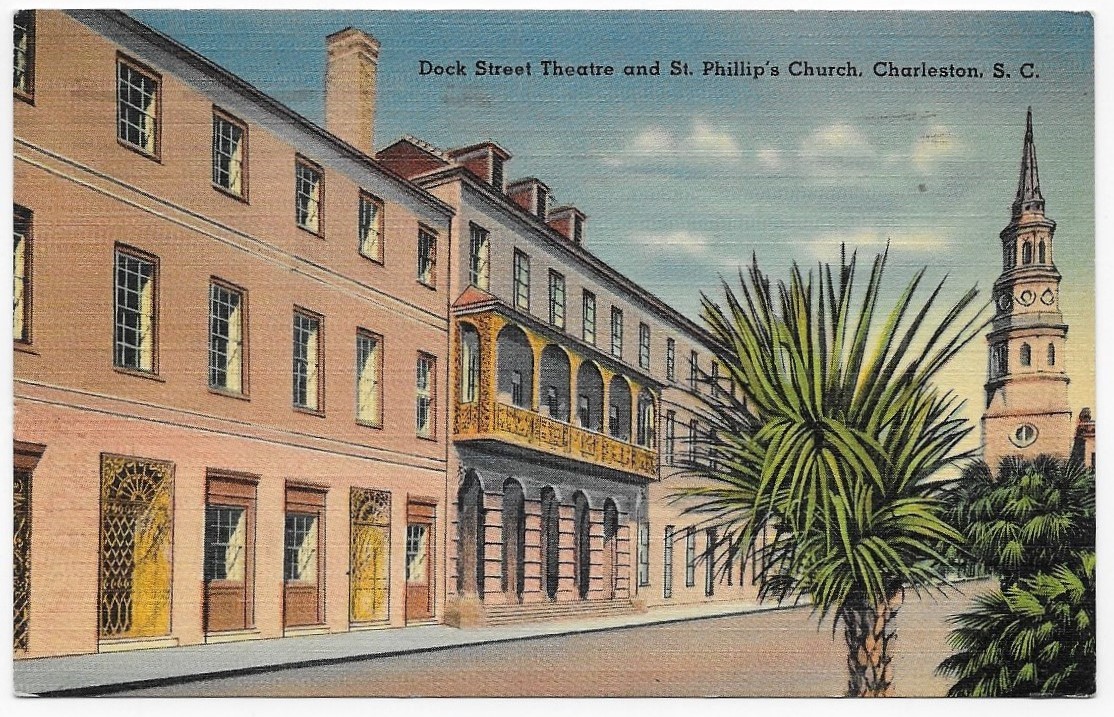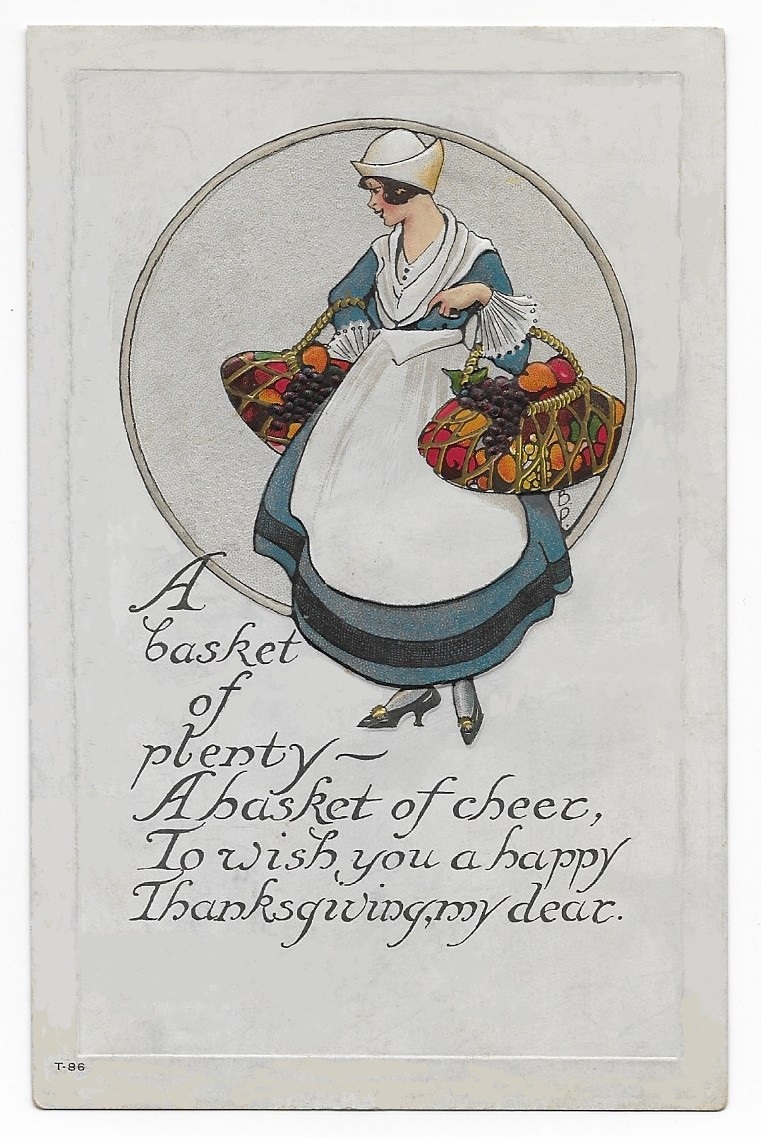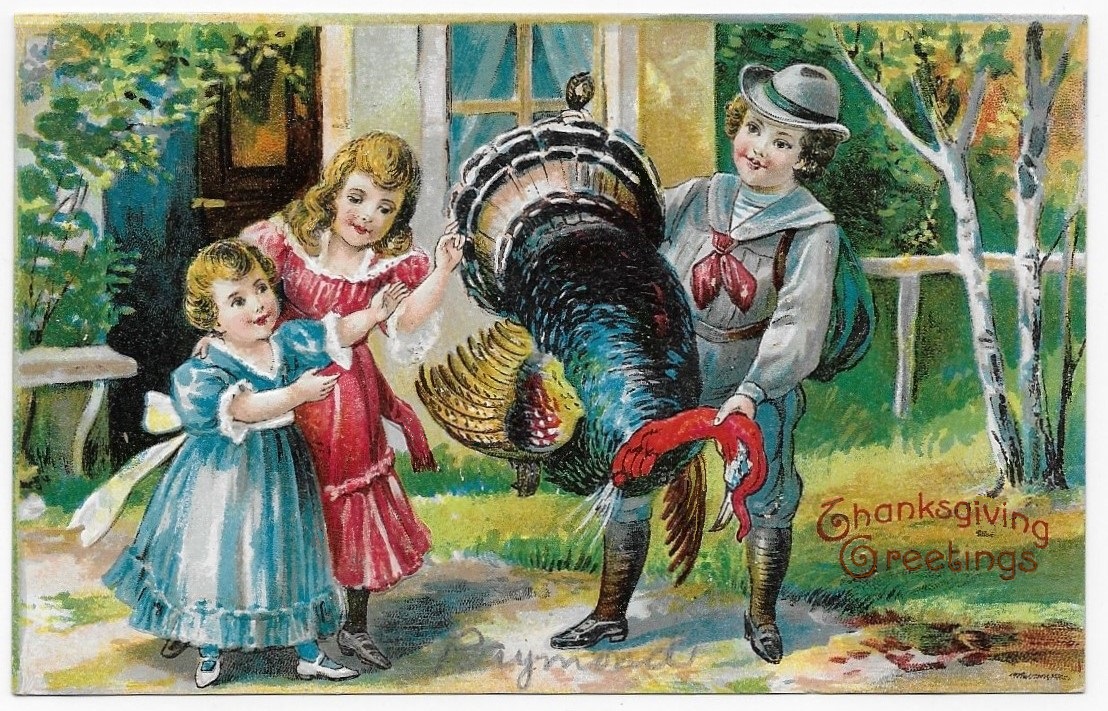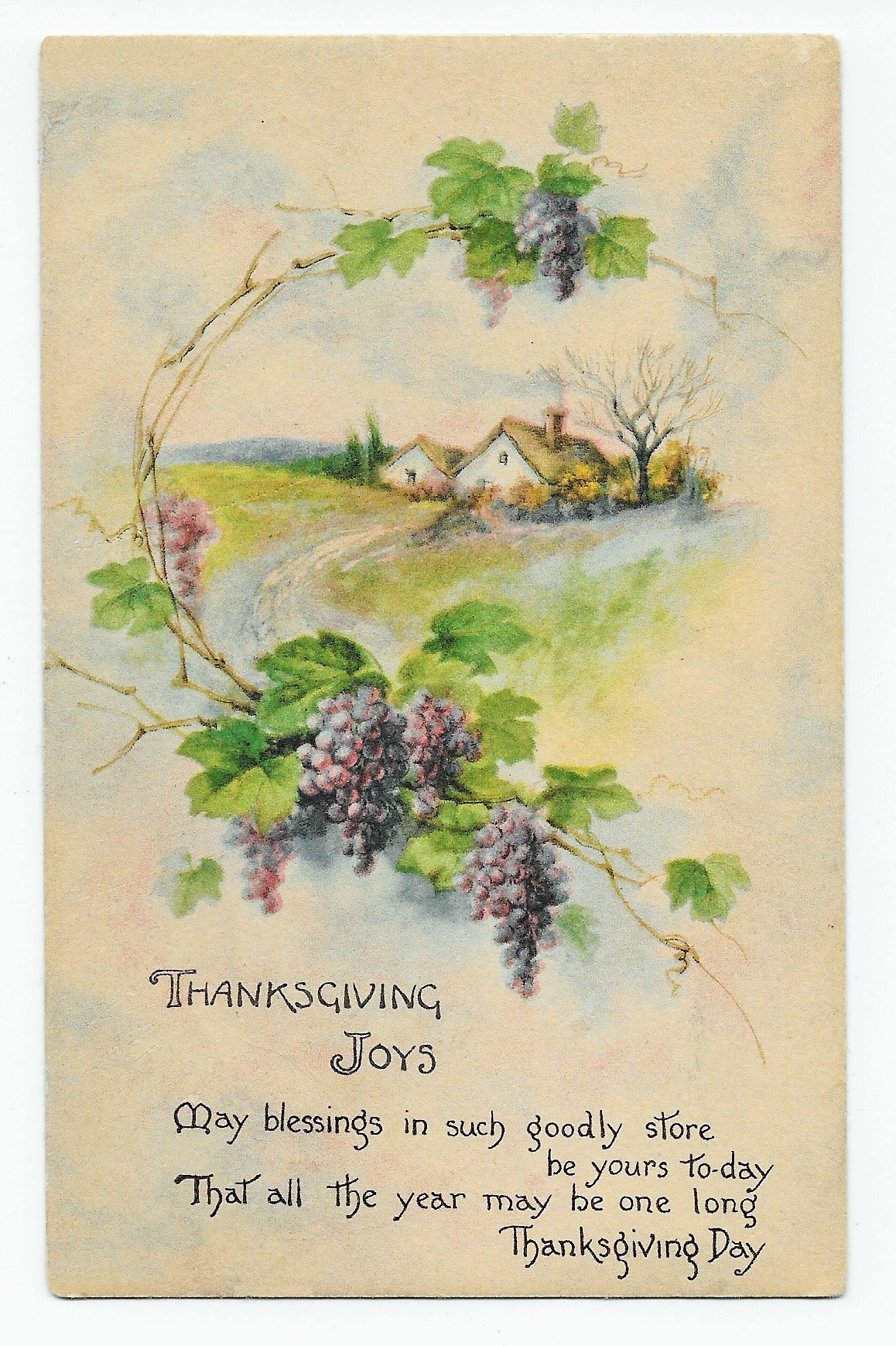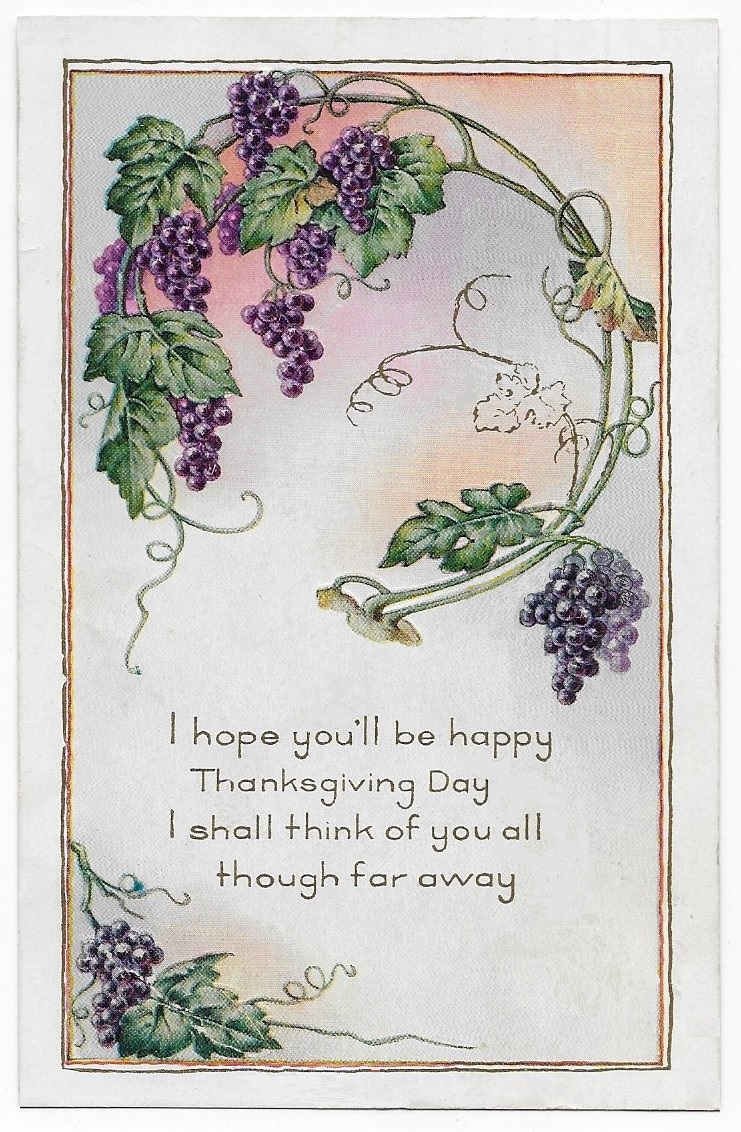Miss Barbara Breckenridge lived in Washington D. C.
https://en.wikipedia.org/wiki/Washington,_D.C.
Edith’s home at 5301 Broad Branch Road is a lovely single-family home on a large lot in the northwest area of the District.
The house was erected in 1927.
https://www.redfin.com/DC/Washington/5301-Broad-Branch-Rd-NW-20015/home/9980978
In April of 1939, Barbara received a postcard from Edith M. Howells.
Edith mailed the postcard from Charleston, the historic port city on the Atlantic coast of South Carolina.
https://en.wikipedia.org/wiki/Charleston,_South_Carolina
The face of the postcard is a drawing of a street in Charleston,
The scene, in a pastel palette, shows the Dock Street Theater in the foreground.
In the distance, one sees the imposing spire of St. Philip’s Church.
The original Dock Street Theater, constructed in 1736, was the first structure to be built in the English colonies for use exclusively for theatrical performances.
The first Dock Street Theater was destroyed in the Great Fire of 1740.
This site then became the Planters Hotel – the origin of the famed “Planter’s Punch”.
After the Civil War, the Planters Hotel fell into disrepair.
The Depression-era federal work program, the WPA, transformed the Planter’s Hotel into the new Dock Street Theater.
The grand foyer of the former hotel became the theater’s grand foyer, and the hotel’s dining room is now the box office lobby.
The auditorium, constructed in what had been the hotel courtyard, was built with local cedar woods according to the designs of 18th century theaters,
The Dock Street Theater shown in the postcard, with the fancy ironwork of the former Planter’s Hotel, reopened in 1937.
(Another major restoration and enhancement was made to the theater in the first decade of the 21st century.)
https://en.wikipedia.org/wiki/Dock_Street_Theatre
The other building referenced in the title of the postcard is St. Philip’s Church.
This church (Anglican) was organized in 1680, the first religious congregation in South Carolina.
The first church building was erected in another location in 1681.
After being damaged in a hurricane in 1710, that building was replaced by a structure on the current site in 1723.
This second church burned to the ground in 1835, and the current church building was erected in 1836.
The tiered steeple, which was used as a harbor light for some time, was added between 1848 and 1850.
After the Revolution, the Anglican churches were reorganized as the Episcopal Church -to which St. Philip’s belonged for two hundred years.
In 2012, the congregation was one of several in South Carolina that sought to leave the Episcopal Church.
1after a lengthy court battle over the retention of property, St. Philip’s became a part of the dissident North American Anglican Communion.
https://en.wikipedia.org/wiki/St.Philip%27s_Church(Charleston,_South_Carolina)
On the reverse of the postcard, Edith informs Barbara that the “theater is very noted” and that “we expect to attend a play here tonight”.
One hopes that Edith enjoyed the play in the storied theater.
Barbara seems to have appreciated the souvenir of Charleston as it is preserved in very good condition.
